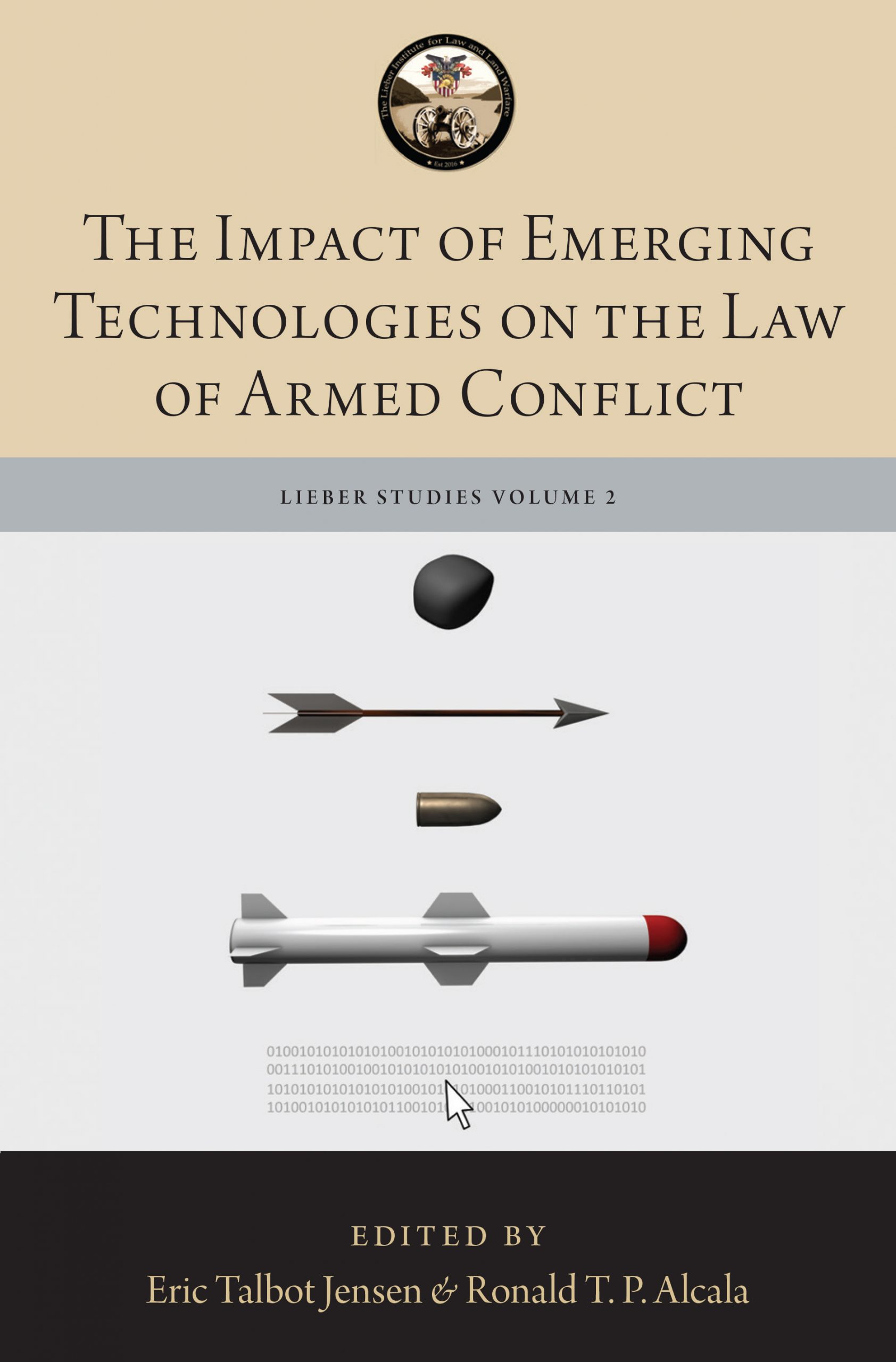Lieber Studies Volume 2
The Impact of Emerging Technologies on the Law of Armed Conflict
Edited by MAJ Ronald T.P. Alcala and Eric Talbot Jensen
Published 27 September 2019
Edited Volume, 408 Pages
ISBN: 9780190915322
Published by Oxford University Press
Disclaimer: Books in the Lieber Studies Series are not official publications of the United States Military Academy, Department of the Army, or Department of Defense. The views expressed in these volumes represent the authors’ personal views and do not necessarily reflect those of the Department of Defense, the United States Army, the United States Military Academy, or any other department or agency of the United States Government. The analysis presented stems from academic research of publicly available sources, not from protected operational information.
Description
Emerging technologies have always played an important role in armed conflict. From the crossbow to cyber capabilities, technology that could be weaponized to create an advantage over an adversary has inevitably found its way into military arsenals for use in armed conflict.
The weaponization of emerging technologies, however, raises challenging legal issues with respect to the law of armed conflict. As States continue to develop and exploit new technologies, how will the law of armed conflict address the use of these technologies on the battlefield? Is existing law sufficient to regulate new technologies, such as cyber capabilities, autonomous weapons systems, and artificial intelligence? Have emerging technologies fundamentally altered the way we should understand concepts such as law-of-war precautions and the principle of distinction? How can we ensure compliance and accountability in light of technological advancement? This volume of the Lieber Studies explores these critical questions while highlighting the legal challenges–and opportunities–presented by the use of emerging technologies on the battlefield.
Table of Contents
Foreword by Brigadier General R. Patrick Huston
Contributors
Introduction
PART ONE: Compliance and Accountability
Chapter 1. Regulating New Weapons Technology
Rebecca Crootof
Chapter 2. Assessing LOAC Compliance and Discourse as New Technologies Emerge: From Effects Driven Analysis to “What Effects?”
Laurie R. Blank
Chapter 3. Leveraging Emerging Technology for LOAC Compliance
Eric Talbot Jensen & Alan Hickey
Chapter 4. Lethal Autonomous Weapons Systems: The Overlooked Importance of Administrative Accountability
Laura A. Dickinson
PART TWO: Precautions
Chapter 5. Law-of-War Precautions: A Cautionary Note
Sean Watts
Chapter 6. The Other Side of Autonomous Weapons: Using Artificial Intelligence to Enhance IHL Compliance
Peter Margulies
Chapter 7. High Tech Civilians, Participation in Hostilities, and Criminal Liability: Reconciling U.S. Perspectives
Lieutenant Colonel Matthew T. King
PART THREE: Distinction
Chapter 8. Emerging Technologies and the Principle of Distinction: A Further Blurring of the Lines between Combatants and Civilians?
Michael W. Meier
Chapter 9. Who Did It? Attribution of Cyber Intrusions and the Jus in Bello
William Banks
Chapter 10. The Law of Armed Conflict Implications of Covered or Concealed Cyber Operations: Perfidy, Ruses, and the Principle of Passive Distinction
Colonel Gary P. Corn & Commander Peter P. Pascucci
Chapter 11. Invisible Soldiers: The Perfidy Implications of Invisibility Technology on Battlefields of the Future
Sephora Sultana & Hitoshi Nasu
Chapter 12. Attack Decision-Making: Context, Reasonableness, and the Duty to Obey
Geoffrey S. Corn
Volume 2 Masthead
General Editor
Professor Michael N. Schmitt
Managing Editors
LTC Shane R. Reeves
LTC Winston S. Williams
Volume Editors
Professor Eric Talbot Jensen
MAJ Ronald T. P. Alcala


